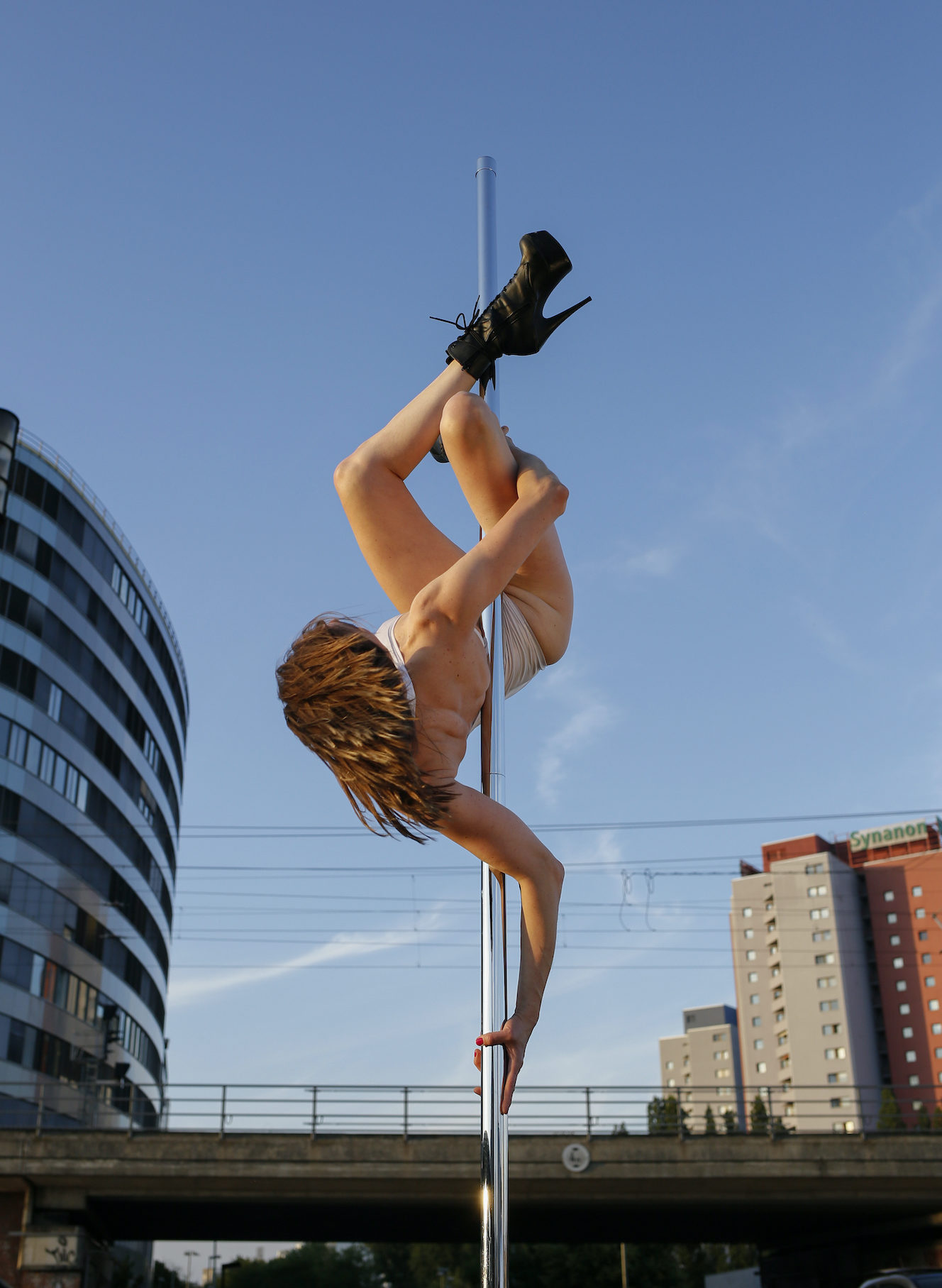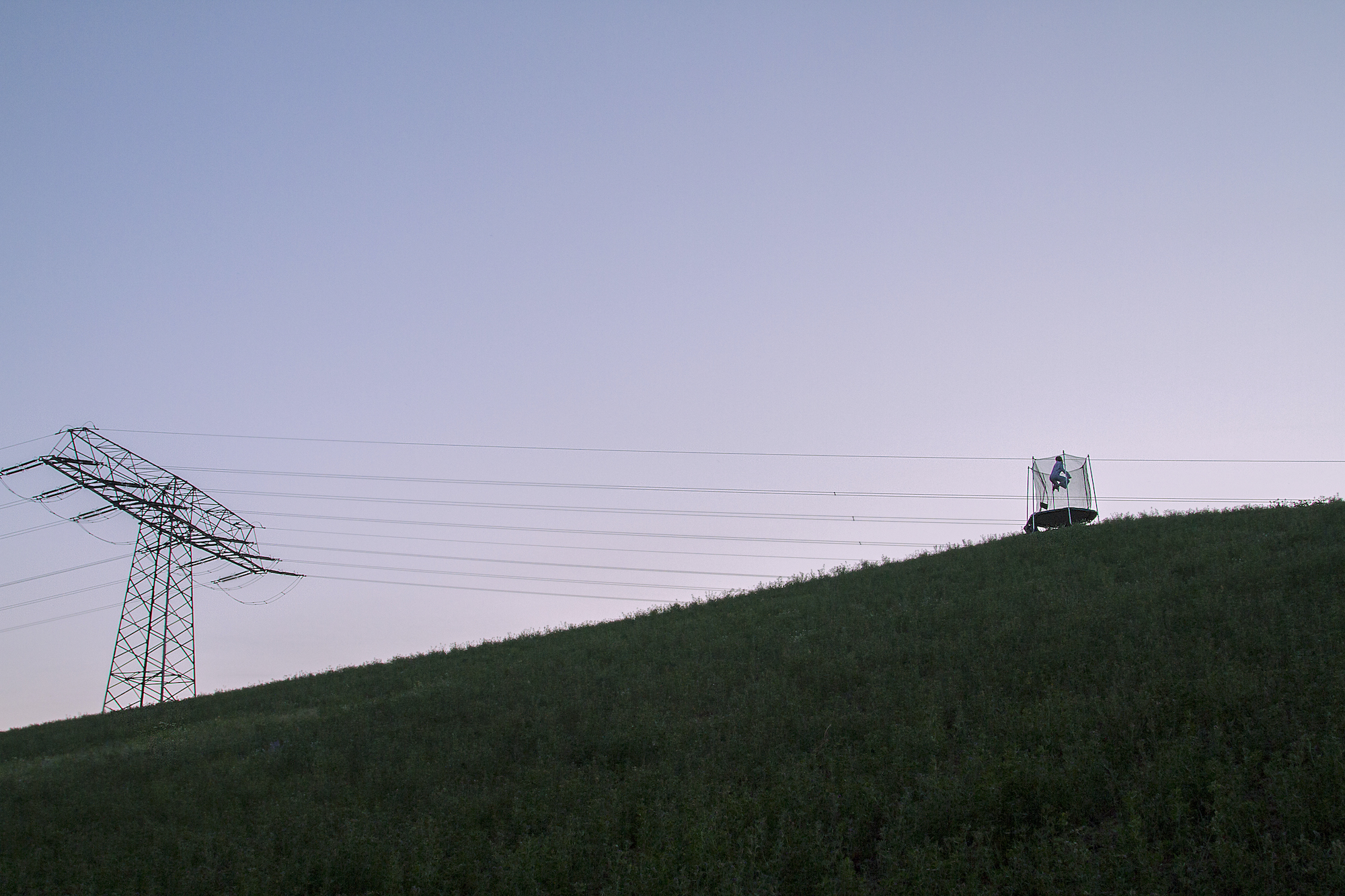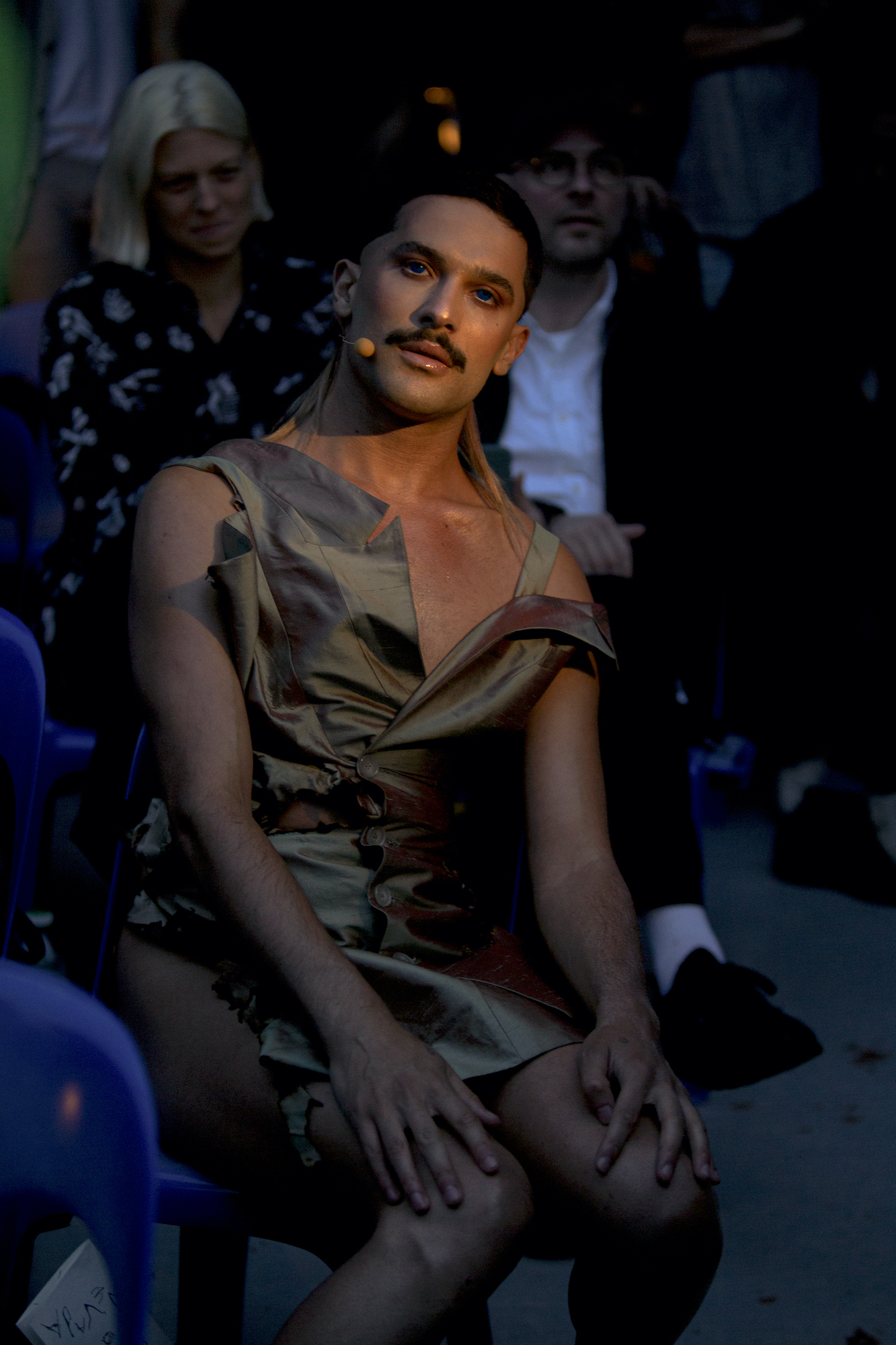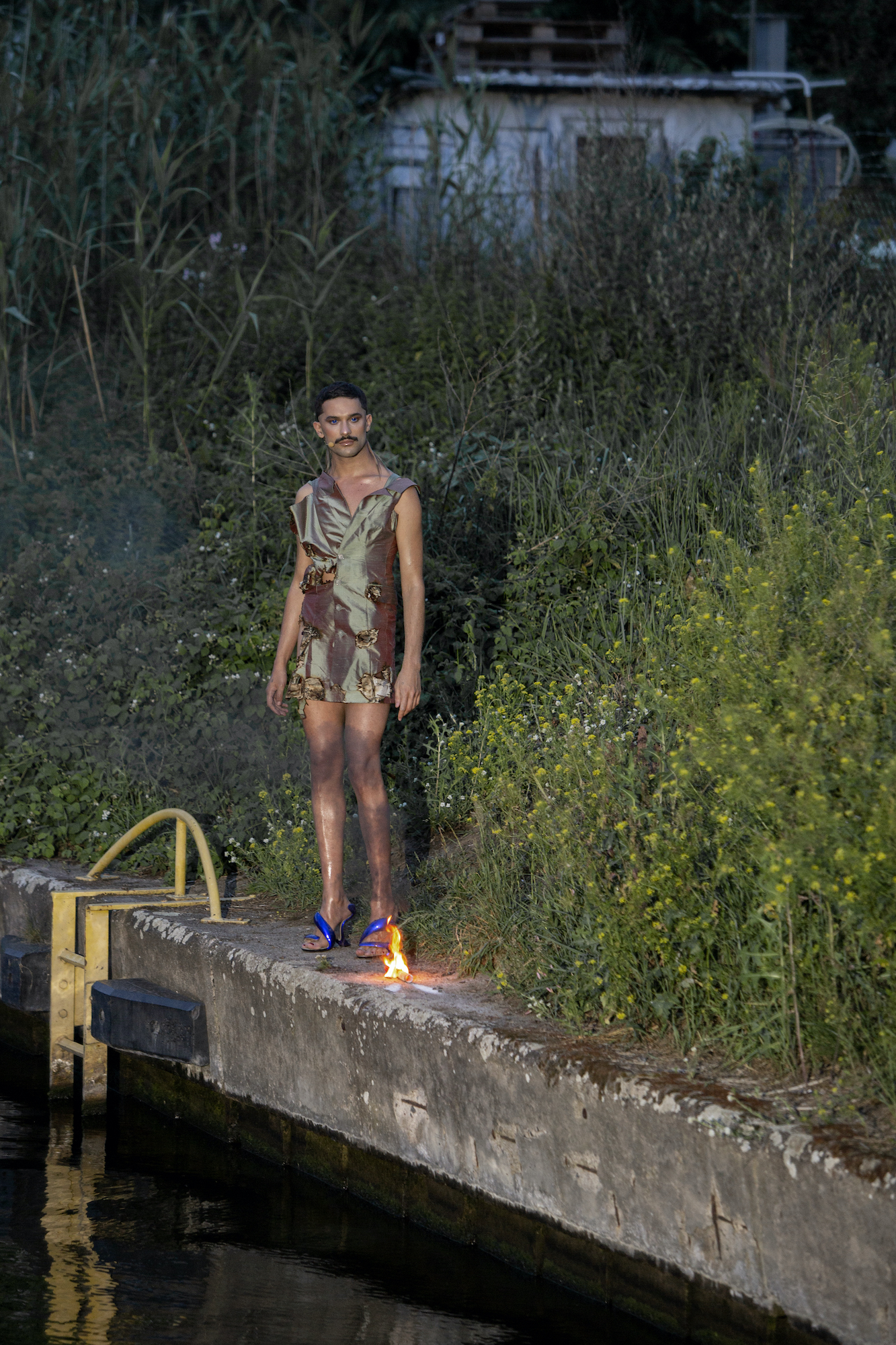Another Map to Nevada
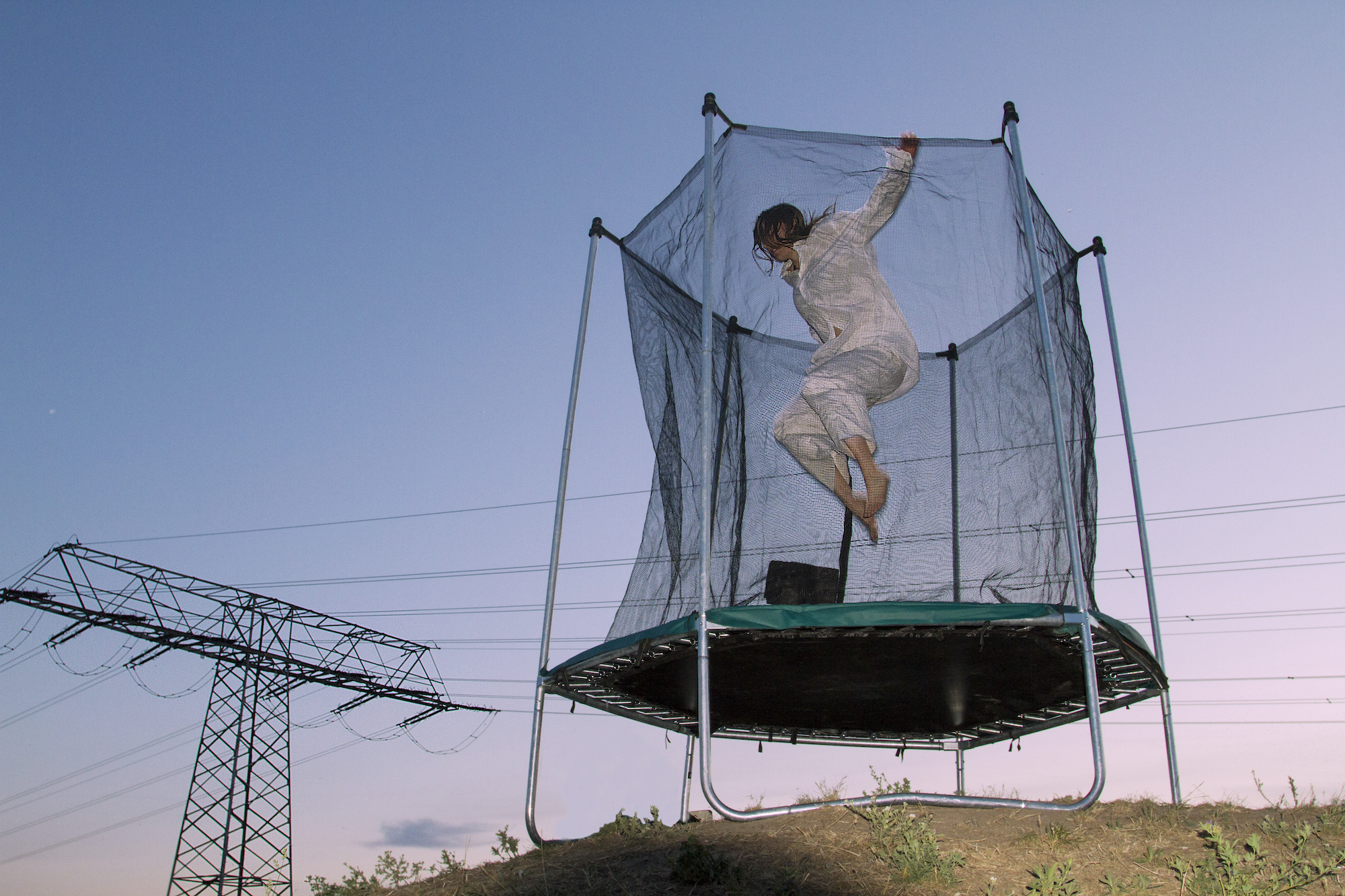
Juliette Blightman, Another Map to Nevada, 2020, performance [photo: Luis Artemio de los Santos; courtesy of The Performance Agency]
Share:
What is the best way to bring out a thriving city’s art crowd for a gathering after they have been forced into hibernation by a global pandemic for weeks and weeks? What are the most appropriate ways to end or at least tone down social distancing without breaching public health guidelines? How can we address—meaning to both interpret and depict—our new post-pandemic world without avoiding the ongoing global crisis? How can we include new social conditions as part of the processes of artmaking and distribution? And how do we perform a semblance of normalcy and, once again, socialize around art in a world that is still far from normal? The organizers and curators of a Berlin event hoped to address these questions when they opened a three-day-only boat ride July 2–4. For this task, Artistic Director Yael Salomonowitz revisited the imperatives of Fluxus artist Robert Delford Brown and references Brown’s work in the title for the event: Another Map to Nevada.
As the boat ride began, audience members were unclear about what would occur. A familiar but disembodied female voice issued from the speakers: “Within, the eye probes more and more deeply, and its strength of vision is broadened and toughened by its external blindness.” The sentence was repeated. I realized that we were hearing the meditative preparation for a street performance by Adrian Piper, originally presented in New York between 1972 and 1976. Piper’s phrase, calling for sensory deprivation, became increasingly unbearable as the boat continued its journey past Berlin’s riverside urban structures. As the first bridge appeared on the horizon, we could identify a performer dancing on a vertical pole erected in the middle of the bridge. The closer the boat got to the bridge, the more apparent it became that this dance was part of the show. This remarkable beginning was Berlin-based DJ and performance artist FRZNTE’s work Nevada Dessert (2020), which also closed the two-hour-long experience (as if with human parentheses) with an identical performance on a bridge close to Kreuzberg.
FRZNTE, Another Map to Nevada, 2020, performance [photo: Melanie Glück; courtesy of The Performance Agency]
The well-designed pamphlet given to the audience before boarding definitely made it easier to anticipate and identify the works visible from the river. Notable among them was A Carpet for Your Somersaults, Boundaries for Your Dance (2020) by Juliette Blightman. House music playing on the boat grew louder, and we could see a sharp hill in a park coming into view. It resembled a triangle with a trampoline on top, which framed Blightman’s performance in harmony with the music on the boat.
Juliette Blightman, Another Map to Nevada, 2020, performance [photo: Luis Artemio de los Santos; courtesy of The Performance Agency]
Another pleasant surprise along the ride was Jimmy Robert’s video Brown Leatherette (2002), projected seamlessly on a warehouse building. The industrial nature of the work made it seem as if there was a camera focused tightly on the production processes inside the building. After staring at this moving image for a while, we could see that it depicted a homeless passenger sleeping on a ferry, relating the boat, the objectivity of the audience, and the time of a crisis.
Amsterdam-based artist Astrit Ismaili stepped aboard the boat during a short stop at the riverbank. Ismaili brought the event into political focus by performing a fragment of their performance Miss (2019), which was retitled Miss Kosovo specifically for this event. This performance was the highlight of the entire evening. Ismaili began with a series of reminders about the historical events surrounding the breakup of Yugoslavia and the creation of Kosovo. Ismaili’s intensely corporeal performance featured compromising movements depicting their own vulnerabilities in light of a crushing history. Framed, as they were, by the contemporary crisis of the pandemic, Ismaili tried to reconcile their personal identity with geopolitical storms surrounding their nationality. Much of this content would be particularly penetrating to those who, like myself, have experienced wars and revolutions while sorting out their own place within geopolitics.
Astrit Ismaili, Another Map to Nevada, 2020, performance [photo: Melanie Glück; courtesy of The Performance Agency]
Astrit Ismaili, Another Map to Nevada, 2020, performance [photo: Melanie Glück; courtesy of The Performance Agency]
Contemporary art is often obscured by the opacity of the white cube and institutional officialities. In this case, the urban background to the performances and the boat ride added an urgent social layer to the event, away from the “perfect” pre-pandemic setting for most art. In light of the total shutdown recently imposed upon the city, it seemed as if viewers were actually there to witness new artistic productions set against the backdrop of unstoppable real estate development in southeast Berlin. Life might have been put on hold in March, but gentrification in Berlin still marches forward.
Overall, most artworks in Another Map to Nevada broke free from typical modes of practice, redefining art for the distanced audience of our difficult times. Their creators also struggled, however successfully, to find a place for art practice somewhere between contemporary bullshit jobs—described by the anthropologist David Graeber as the type of work with little social consequence apart from the misery of ticking-boxes jobs—and the new category of essential work marked by the urgencies of the COVID-19 pandemic.
